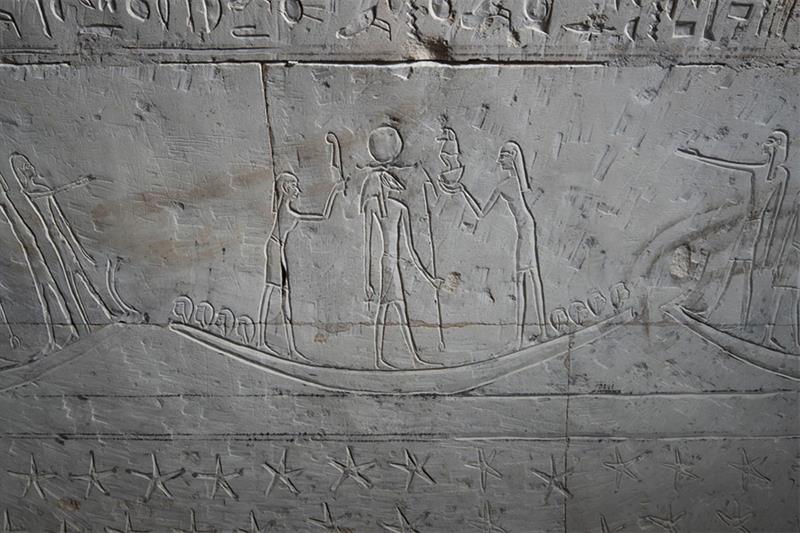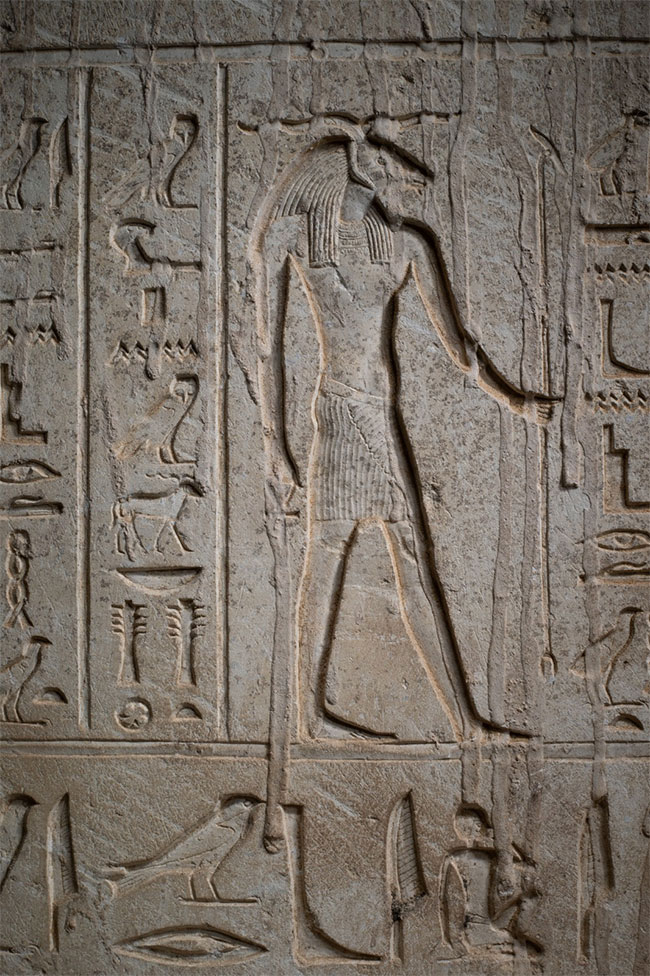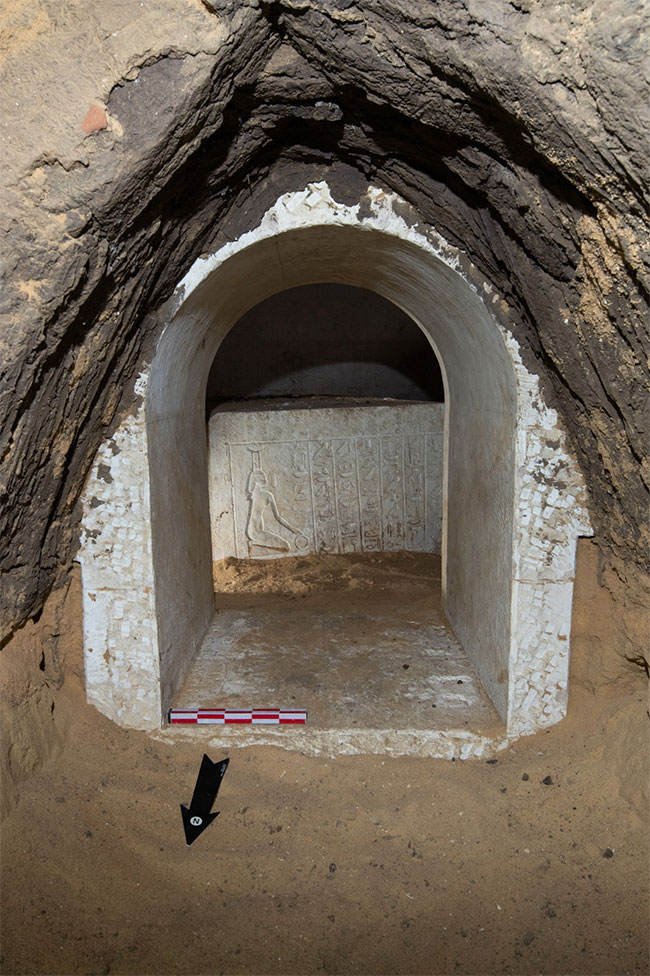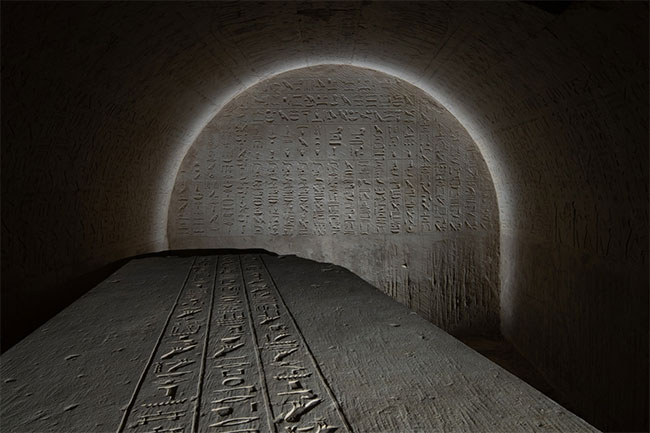In Photos: Tomb of Late Period royal scribe unearthed in Abusir necropolis
Nevine El-Aref , Friday 3 Nov 2023
The tomb of a Late Period royal scribe has been uncovered in Abusir necropolis, unveiling more secrets of the site during the fifth and sixth centuries BC.

Nestled in the sands of the Nile Delta, Abusir necropolis has long been a treasure trove of archaeological discoveries, offering valuable insights into the grandeur and mysteries of ancient Egypt.
The most recent discovery in the necropolis was carried out by a Czech archaeological mission from the Czech Institute of Egyptology of the Faculty of Arts, Charles University. The team uncovered the tomb of the high official Djehutyemnakht who lived in the Late Period, during the 6th and 5th centuries BC.
Mostafa Waziri, Secretary General of the Supreme Council of Antiquities said that the first evidence of the tomb was discovered in May, in the cemetery for high-ranking officials and military commanders from the 26th and 27th Dynasties.
"These shaft tombs represent a type of tomb specific to this era, and were created by the ancient Egyptian elites in imitation of the tomb of King Djoser, the founder of the famous Old Kingdom of the pyramid-building era of the 3rd millennium BC," He pointed out.
Director of the mission, Miroslav Verner pointed out that the upper part of the tomb, situated above ground, was destroyed already in antiquity. Its burial chamber is situated at the bottom of the main shaft located at a depth of 14 metres below ground.
To the north is a small shaft leading to the chamber through a narrow horizontal corridor about three metres long. "Surprisingly enough, the small shaft was partly filled with several dozen large relief blocks coming from the monumental tomb of General Menekhibnekau situated nearby," said Miroslav.
The burial chamber is richly decorated with texts and scenes. The northern wall is covered with a long sequence of apotropaic spells against snake bites from the Pyramid Texts.
"Interestingly, the snakes mentioned in them were on the one hand considered dangerous, but on the other hand, they acted as powerful protectors of the deceased and his mummy," Marcel Bárta confirmed.
The tomb's owner, "a certain Djehutyemnakht, held the office of a royal scribe," says Ladislav Bareš, who has coordinated Czech excavations of Late Period shaft tombs in Abusir for more than two decades.
"This new find, together with our previous discoveries from this excavation site, as was the large-scale shaft tomb of general Wahibrameryneith, will shed more light on historical changes taking place in Egypt in the turbulent 6-5th centuries BC."
The southern and western walls are adorned with ritual offerings and an extensive list of offerings. On the ceiling of the burial chamber, there are depictions of the sun's journey across the sky in his morning and evening barques, accompanied by hymns to the rising and setting sun.
Inside the burial chamber, covered with relief decoration, is a large stone sarcophagus, which also bears hieroglyphic inscriptions and depictions of gods, both outside and inside.
The top side of the sarcophagus lid is adorned with three columns of hieroglyphic text from the liturgy of Chapter 178 of the Book of the Dead, which is composed of excerpts from the much older Pyramid Texts.
The longer sides of the lid feature Chapter 42 of the Book of the Dead, dedicated to the deification of the body parts of the deceased, including depictions of individual deities to whom the deceased is assimilated.
The shorter walls of the lid bear images of the goddesses Isis and Nephthys, accompanied by texts in which they provide protection to the deceased.
On the outer walls of the chest of the sarcophagus, there are excerpts from the Coffin Texts and Pyramid Texts, partially repeating the spells that already appear on the walls of the burial chamber.
At the bottom of the inner wall of the coffin, Imentet, the goddess of the West is depicted, and the inner sides contain the so-called canopic spells, recited by this goddess and the earth god Geb.
All of these mentioned religious-magical texts were intended to ensure the deceased's smooth entry into the blessed and well-provided eternal life in the afterlife.
The tomb of the scribe Djehutyemnakht was discovered almost empty, having been robbed, like other tombs in this burial site, probably as early as the 5th century AD.
"Anthropological analysis of the skeletal remains, undertaken by leading Egyptian experts, has shown that Djehutyemnakht died at a relatively early age around 25 years old" Mohamed Megahed, deputy director of the Czech mission told Ahram Online.
He explains that the analysis shows that the skeleton bore signs of wear on the spine from sedentary work, and suffered from severe osteoporosis.
The latter fact could mean he was related to other inhabitants of this burial complex, in whom this disease has also been discovered, such as the owner of the neighbouring tomb Iufaa, whose intact burial chamber was uncovered in 1996.
"It is therefore possible that most of the owners of the shaft tombs buried in this part of the Abusir necropolis belonged to one extended family, strongly anchored in the military elite of late Saite Egypt," Megahed suggested.



-- Sent from my Linux system.
No comments:
Post a Comment